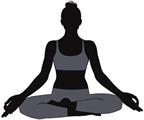ThisisPatientEngagementcontent
Mindfulness-based Stress Reduction
Learn more about our Patient Engagement products now! Turn your patients into active participants in their healthcare by giving them easy access to the same evidence-based information you trust – but delivered in an easy-to-understand format.
Mindfulness-based stress reduction (MBSR) is a mindfulness meditation program that normally takes place over 8 weeks. It usually includes weekly group classes and daily exercises to do at home.
Mindfulness meditation therapies, like MBSR, can change a person's brain and body in good ways, and make them healthier.
MBSR can have many benefits, such as:
This information is not intended to replace advice given to you by your health care provider. Make sure you discuss any questions you have with your health care provider.
Cookies are used by this site. To decline or learn more, visit our cookie notice.
Copyright © 2025 Elsevier, its licensors, and contributors. All rights are reserved, including those for text and data mining, AI training, and similar technologies.